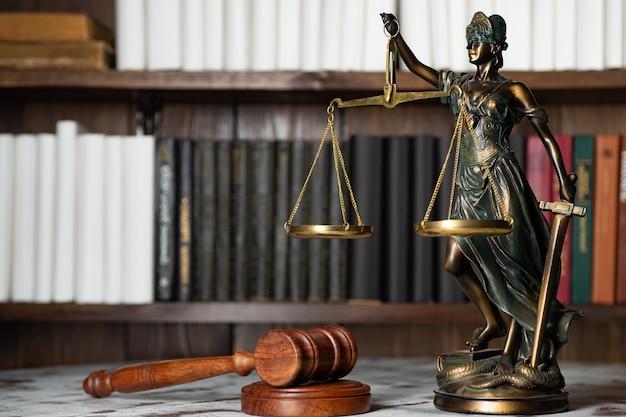Today, in the year 2023, we find ourselves living in societies governed by a complex web of laws and regulations that structure our daily lives. But have you ever wondered how this legal tradition came into existence? What document provided the foundation for the concept of justice and the rule of law? Join me as we embark on a journey to unravel the origins of our legal system and explore the significance of protecting our time-honored traditions.
At the heart of legal traditions lies a fundamental document that served as a beacon of justice throughout history. This document, which emerged centuries ago, laid the groundwork for the principles of fairness, equality, and order that continue to shape our judicial systems today. By examining this pivotal document through the lens of time, we can gain a deeper understanding of the evolution of laws and the importance of preserving our rich legal heritage for future generations.
Over the course of this blog post, we will delve into the concept of legal tradition and its connection to laws and justice. We will address questions that often arise, such as whether a tradition is a mere rule and the significance of safeguarding traditions. So fasten your seatbelts, dear readers, as we explore the fascinating story behind the document that helped create a legal tradition based on laws and justice!

Document That Shaped the Legal Tradition of Laws and Justice
When it comes to the creation of legal traditions that revolve around laws and justice, one document stands out as a cornerstone: the Magna Carta. This influential document, drafted in 1215, has left an indelible mark on legal systems around the world, including the United States. In this subsection, we will delve into the significance of the Magna Carta, its impact on the development of legal traditions based on laws and justice, and its relevance in modern times.
The Magna Carta: An Ancient Agreement
Defending the Rights of Englishmen (and Women)
The Magna Carta, also known as the Great Charter, emerged from a tumultuous time in English history. King John, faced with growing opposition from his barons, was compelled to agree to a document that limited his powers and protected the rights of his subjects. It marked a pivotal moment in the pursuit of justice and the establishment of legal restrictions on absolute monarchies.
A Favorable Twist of Events
Believe it or not, the story behind the Magna Carta involves drama, intrigue, and even a little bit of humor. Legend has it that King John put his seal on the charter under duress, with his barons breathing down his neck. The original document, written in Latin on parchment, consisted of 63 clauses that addressed rights and liberties, feudal obligations, and the administration of justice. While some of the provisions were specific to the concerns of the time, others laid the foundation for subsequent legal developments and enduring principles.
Legacy and Influence: Shaping Legal Traditions
A Global Impact
Although the Magna Carta was initially conceived as a solution to grievances within medieval English society, its influence extended far beyond the realms of the British Isles. As the world changed, this document served as a wellspring of inspiration for legal experts, lawmakers, and advocates of justice worldwide. Concepts such as due process, trial by jury, and protection against arbitrary imprisonment found their roots in the principles set forth by the Magna Carta.
The Magna Carta in the American Context
Fast forward to the American Revolution, where a burgeoning nation sought to create a legal system that emphasized individual rights and the rule of law. The Founding Fathers drew inspiration from a multitude of sources, including the Magna Carta, which played a pivotal role in shaping the American legal tradition. As concepts such as habeas corpus and the right to a fair trial took root in the United States, the foundation laid by the Magna Carta remained a guiding principle.
The Magna Carta Today: A Lasting Legacy
From Parchment to Modern Law
Although the language and context of the Magna Carta might seem archaic by today’s standards, its principles continue to reverberate within modern legal systems. The idea that no individual, not even a monarch, is above the law has become an inherent part of democratic societies. The Magna Carta, despite being over 800 years old, serves as a symbolic beacon of justice, reminding us of the ceaseless pursuit of a legal system founded on fairness, equality, and accountability.
A Touchstone for Human Rights
In the face of evolving societal values and technological advancements, the Magna Carta’s legacy endures. Its influence can be seen in various human rights conventions and constitutions worldwide. While the specifics may differ, the underlying ethos of justice, rights, and the rule of law remains central to modern legal traditions.
The Magna Carta, an ancient document born out of pressing circumstances, has left an indelible mark on legal traditions based on laws and justice. Its impact can be felt around the globe, including within the American legal system. As we navigate the complexities of the 21st century, the Magna Carta serves as a reminder of the fundamental principles that underpin our pursuit of justice.

FAQ: Documenting the Birth of Legal Tradition
What document sparked the creation of a legal tradition rooted in laws and justice
If you’re wondering which specific document played a vital role in establishing a legal tradition centered around laws and justice, look no further than the Code of Hammurabi. This ancient Babylonian legal code, dating back to 1754 BCE, laid the groundwork for the development of legal systems we see today.
What exactly does “legal tradition” refer to in relation to laws and justice
Legal tradition refers to the collective body of laws, principles, and practices that shape the justice system in a particular society or culture. It encompasses legal norms, customs, and precedents that have been established and passed down through generations, shaping the way laws are interpreted and justice is administered.
Is a legal tradition the same as a set of rules
While legal traditions encompass rules and regulations, they go beyond mere statutes. A legal tradition encompasses values, customs, and unwritten principles that guide the interpretation and application of laws within a specific jurisdiction. In contrast, rules typically focus on narrower, specific, and more explicit mandates.
Why should we prioritize the preservation of legal traditions
Protecting legal traditions is of utmost importance due to the rich historical, cultural, and societal significance they hold. These traditions often encompass fundamental principles of justice and fairness that have been refined and developed over centuries. Preserving legal traditions ensures continuity, consistency, and a sense of identity within the justice system, promoting stability and trust in the rule of law.
So, whether you’re diving into ancient legal codes or pondering the impact of age-old customs, understanding the origins and significance of legal traditions can shed light on the evolution and development of our justice systems. Embracing and safeguarding these traditions ensures that future generations continue to benefit from the wisdom and experiences of the past. Let us treasure our legal traditions, for they are the bedrock upon which justice stands.
